Ditapis dengan

Development of Nuclear Security Detection Architecture Program Implementation…
Pemerintah Indonesia melalui Badan Pengawas Tenaga Nuklir (BAPETEN) mengumumkan rencana besar dalam memperkuat keamanan nuklir nasional dengan pemasangan 26 unit Radiation Portal Monitor (RPM) dan 113 unit Personal Radiation Detector (PRD) di berbagai pelabuhan dan bandara utama. Langkah ini dilakukan sebagai respons atas potensi ancaman penyelundupan zat radioaktif di wilayah kepulauan Indo…
- Edisi
- -
- ISBN/ISSN
- 1412-3258
- Deskripsi Fisik
- 9p. : Illus. ; pdf
- Judul Seri
- -
- No. Panggil
- 363.1799 HAD D
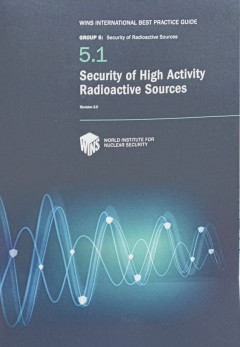
Security of High Activity Radioactive Source
Radioactive sources are used routinely by hospitals, research facilities and industry for such purposes as diagnosing and treating illnesses, sterilising equipment and inspecting welds. In countries with mature regulatory structures, the use of radioactive sources is highly regulated from a safety perspective. Licensees (authorised users) readily accept such regulations because they are well aw…
- Edisi
- -
- ISBN/ISSN
- 978-3-903031-82-1
- Deskripsi Fisik
- 33 p. : iilus. ; 29.5 cm.
- Judul Seri
- -
- No. Panggil
- 621.48 WIN S
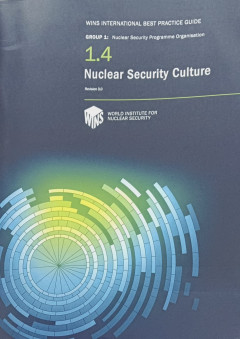
Nuclear Security Culture
Experience in a wide range of organisations entrusted with the security of sensitive materials strongly indicates that pervasive culture of security-as much as a robust security infrastructure-is essential to successfully lowering the risks associated with insider and external threats. This WINS International Best Practice Guide explains what nuclear security culture is, how it is created, and …
- Edisi
- -
- ISBN/ISSN
- 978-3-903031-80-7
- Deskripsi Fisik
- 37 p. : illus. ; 29.5 cm.
- Judul Seri
- -
- No. Panggil
- 621.48 WIN N
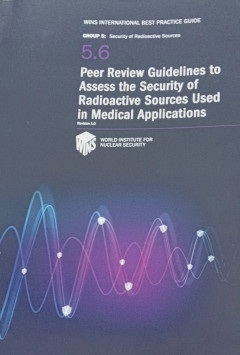
Peer Review Guidelines to Assess the Security of Radioactive Sources Used in …
Although radioactive sources are used around the world for multiple health purposes, they have the potential to cause significant harm if they fall into the wrong hands. A serious security event involving such sources could open a health care facility (HCP) to legal and economic liabilities; injure personnel, patients and members of the public; damage the environment; create widespread fear, pa…
- Edisi
- -
- ISBN/ISSN
- 978-3--903191-05-1
- Deskripsi Fisik
- 29 p. : illus. ; 29.5 cm.
- Judul Seri
- -
- No. Panggil
- 621.48 WIN P
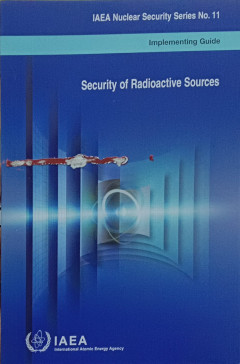
Security of Radioactive Sources | IAEA Nuclear Security Series No. 11
There are concerns that terrorist or criminal groups could gain access to high activity radioactive sources and use these sources maliciously. The IAEA is working with Member States to increase control, accounting and security of radioactive sources to prevent their malicious use and the associated potential consequences. Based on extensive input from technical and legal experts, this Implement…
- Edisi
- -
- ISBN/ISSN
- 92-0-111406-0
- Deskripsi Fisik
- 66p;illus.;24cm.
- Judul Seri
- -
- No. Panggil
- 621.48 IAE S
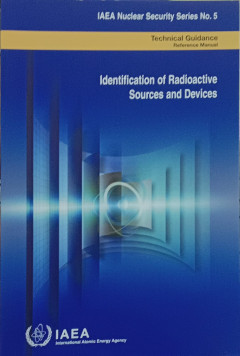
Identification of Radioactive Sources and Devices | IAEA Nuclear Security Ser…
This manual has been produced as part of the IAEA’s Action Plan for the Safety of Radiation Sources and Security of Radioactive Material. It is intended to: assist in the recognition and identification of objects thought to be radioactive devices, sources and transport packages; provide instruction on what to do and how to obtain further help; enhance awareness of the existence of radioactive…
- Edisi
- -
- ISBN/ISSN
- 92-0-111406-0
- Deskripsi Fisik
- 138p;illus.;24cm.
- Judul Seri
- -
- No. Panggil
- 621.48 IAE I
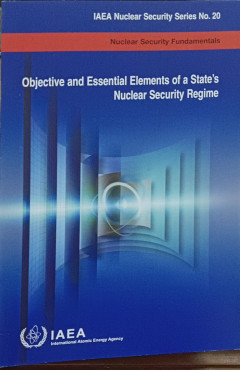
Objective and Essential Elements ofa State's Nuclear Security Regime | IAEA N…
This IAEA Nuclear Security Series publication provides nuclear security fundamentals, recommendations, and supporting guidance for Member States to assist them in implementing new nuclear security regimes, or in reviewing and, if necessary, strengthening existing ones. The publication is aimed at national policy makers, legislative bodies, competent authorities, institutions and individuals inv…
- Edisi
- -
- ISBN/ISSN
- 978-92-0-137810-1
- Deskripsi Fisik
- 15p;illus.;24cm.
- Judul Seri
- -
- No. Panggil
- 621.48 IAE O
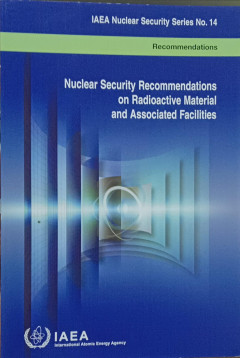
Nuclear Security Recommendations on Radioactive Material and Associated Facil…
The purpose of this publication is to provide guidance to States and competent authorities on how to develop or enhance, implement and maintain a nuclear security regime for facilities dealing with radioactive material and associated activities. This is to be achieved through the establishment or improvement of their capabilities to implement a legislative and regulatory framework to address th…
- Edisi
- -
- ISBN/ISSN
- 978-92-0-112110-3
- Deskripsi Fisik
- 27p;illus.;24cm.
- Judul Seri
- -
- No. Panggil
- 621.48 IAE N

Regulatory Authorization and Related Inspections for Nuclear Security During …
Dokumen ini merupakan bagian dari IAEA Nuclear Security Series yang berfokus pada otorisasi regulasi dan inspeksi terkait keamanan nuklir selama masa operasional fasilitas nuklir. Dengan nomor publikasi 45-T, dokumen ini memberikan panduan teknis yang penting bagi negara-negara dalam mengembangkan dan menerapkan kerangka kerja keamanan nuklir yang efektif. Isi dan Tujuan Dokumen: Dokumen in…
- Edisi
- STI/PUB/2016
- ISBN/ISSN
- 978-92-0-127922-4
- Deskripsi Fisik
- ix,80p.:illus.;pdf
- Judul Seri
- -
- No. Panggil
- 363.17 IAE R
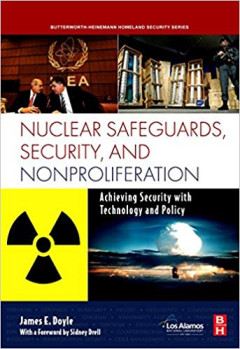
Nuclear Safeguards, Security, and Nonproliferation: Achieving Security with T…
With an increase of global security concerns over potential terrorist acts, the threat of WMDs, and increasing political issues with nations seeking nuclear capability, the need to track, detect, and safeguard nuclear material globally has never been greater. Nuclear Safeguards, Security and Nonproliferation is a comprehensive reference that covers cutting-edge technologies used to trace, track…
- Edisi
- -
- ISBN/ISSN
- 9780750686730
- Deskripsi Fisik
- xx1, 592 p. : Illus. ; Cm
- Judul Seri
- -
- No. Panggil
- 539.7 DOY N
 Karya Umum
Karya Umum  Filsafat
Filsafat  Agama
Agama  Ilmu-ilmu Sosial
Ilmu-ilmu Sosial  Bahasa
Bahasa  Ilmu-ilmu Murni
Ilmu-ilmu Murni  Ilmu-ilmu Terapan
Ilmu-ilmu Terapan  Kesenian, Hiburan, dan Olahraga
Kesenian, Hiburan, dan Olahraga  Kesusastraan
Kesusastraan  Geografi dan Sejarah
Geografi dan Sejarah